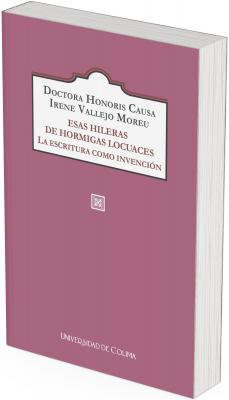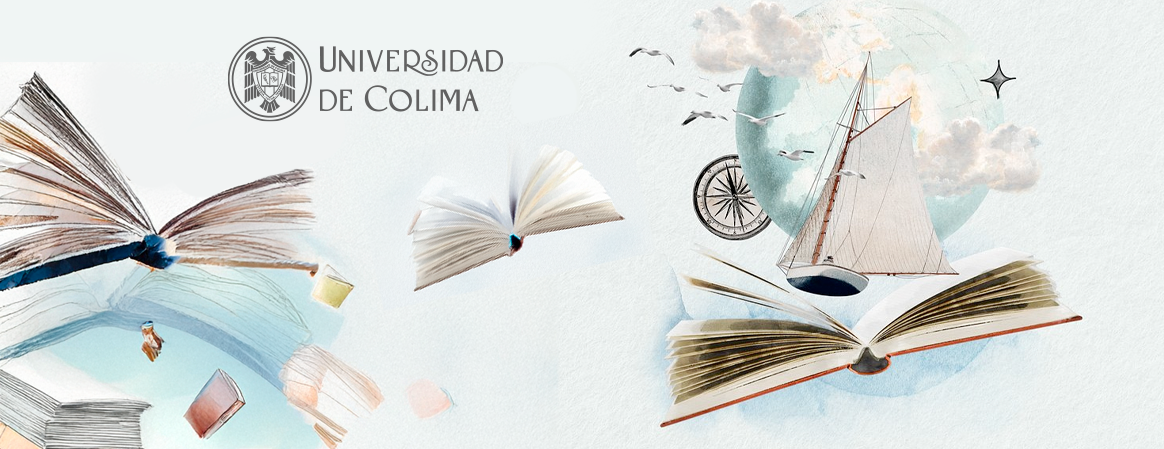Doctor Honoris Causa Irene Vallejo Moreu: Those Rows of Crazy Ants: Writing as an Invention
Keywords:
Honoris causa, Irene Vallejo, speech, history of writingSynopsis
Irene Vallejo is more than just a writer. She is an explorer of lost worlds, a guide that takes us by the hand through paths of wisdom. Her words inspire us to read, to think, to dream. In El infinito en un junco, her most famous work, distinguished as the most important Spanish book of this quarter of a century, it invites us to wander the history of writing, from the Sumerian clay tablets, all the way to digital texts. Irene’s works are recognized on an international level and she has been worthy of numerous prizes.
The honorary doctorate that is granted by the University of Colima is a revindication of the right to education, culture, and reading, to books, and imagination; a commitment of those who are present and those who will continue believing in the power of education and the transformative power of universities. Irene certifies a conviction that we encourage at the University of Colima from its origin: “education is the fairest social elevator that we have ever dreamed of.”
Downloads
References
Báez, F. (2011). Nueva historia universal de la destrucción de los libros. De las tablillas sumerias a la era digital. Editorial Destino.
Báez, F. (2013). Los primeros libros de la humanidad. El mundo antes de la imprenta y el libro electrónico. Editorial Fórcola.
Clayton, E. (2015). La historia de la escritura. (M. Condor, trad.). Editorial Siruela. (Edición original: The Golden Thread. The Story of Writing, 2013).
Diodoro Sículo (s. f.) Biblioteca histórica. I, 49, 3.
Dehaene, S. (2007). Les neurones de la lecture. Odile Jacob.
Escolano-Poveda, M. (2013). Antiguos escribas, copistas modernos. En J. Virgili (Ed.), Papiro erótico (pp. 129-152). San Feliu de Llobregat: Bibliogemma.
Hustvedt, S. (2013). Vivir, pensar, mirar. (C. Ceriani, trad.). Editorial Anagrama. (Edición original: Living, Thinking, Looking, 2012).
Manguel, A. (2002). Una historia de la lectura. (J. L. López Muñoz, trad.). Alianza Editorial. (Edición original: A History of Reading, 1996).
Martínez, A. y Vega, M. E. (eds.). (2015). Los mayas: voces de piedra. UNAM, Turner.
Plinio el Viejo (s. f.) Historia natural. XXXV, 43, 151.
Reyes, A. (1979). Libros y libreros en la Antigüedad. Fondo de Cultura Económica.
Sánchez-Vidal, A. (2011). La especie simbólica. Universidad Pública de Navarra, Cátedra Jorge Oteiza.
Solnit, R. (2020). Una guía sobre el arte de perderse. (C. Ministral, trad.). Editorial Capitán Swing. (Edición original: A Field Guide to Getting Lost, 2005).
Velásquez, É. (2014). Oralidad, pictografía y escritura de los pueblos indígenas. En Historia ilustrada de México (E. Florescano ed.). Debate.
Villoro, J. (2024). No soy un robot. La lectura y la sociedad digital. Anagrama.
Wolf, M. (2008). Cómo aprendemos a leer. Historia y ciencia del cerebro y la lectura. (M. Rodríguez-Courel, trad). Ediciones B. (Edición original: Proust and the Squid, 2007).
Wolf, M. (2020). Lector, vuelve a casa. (M. Maestro, trad.). Editorial Deusto. (Edición original: Reader, Come Home, 2018).

Published
License

This work is licensed under a Creative Commons Attribution-NonCommercial-ShareAlike 4.0 International License.







